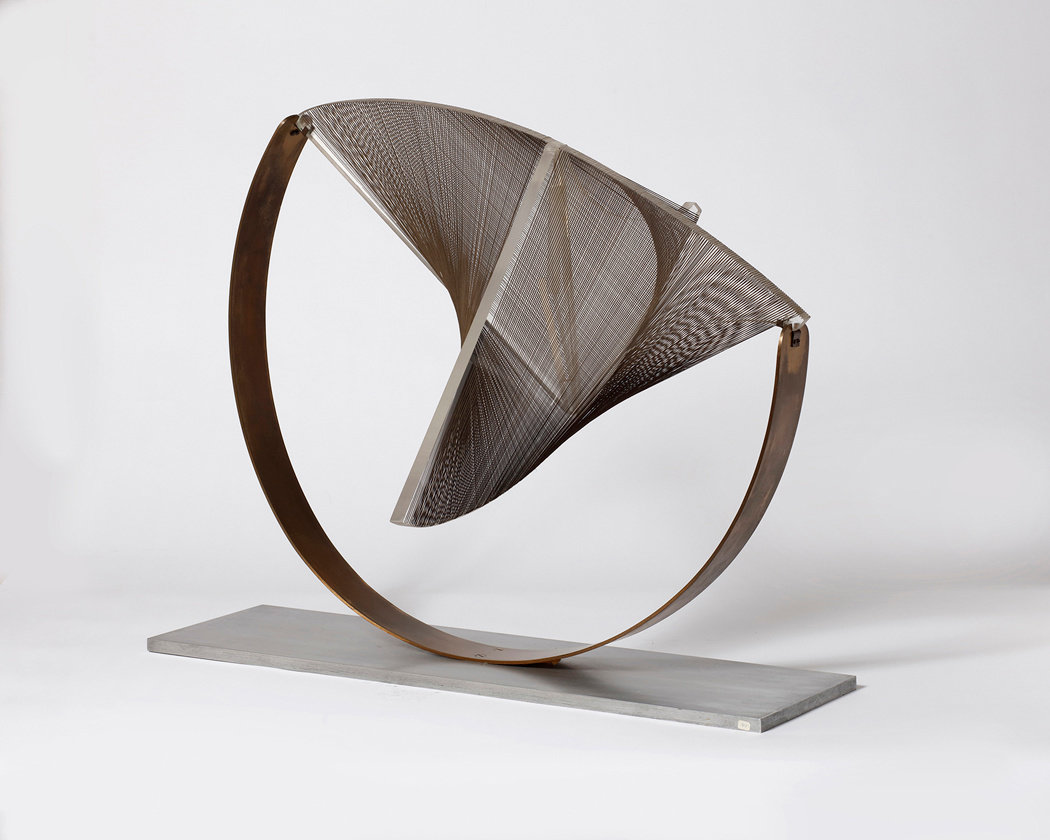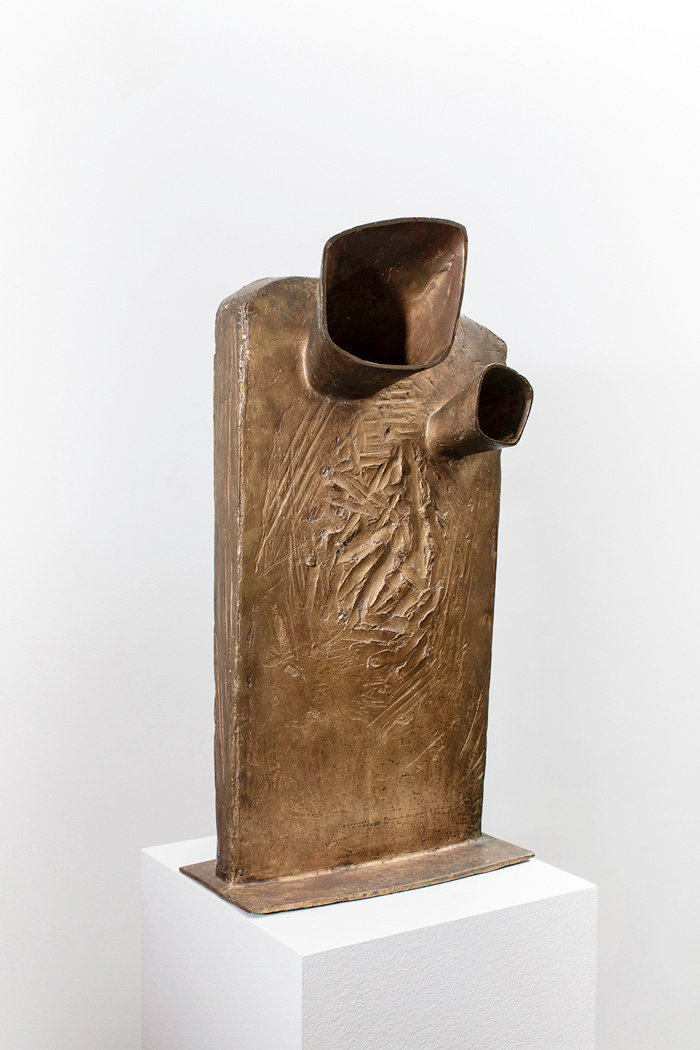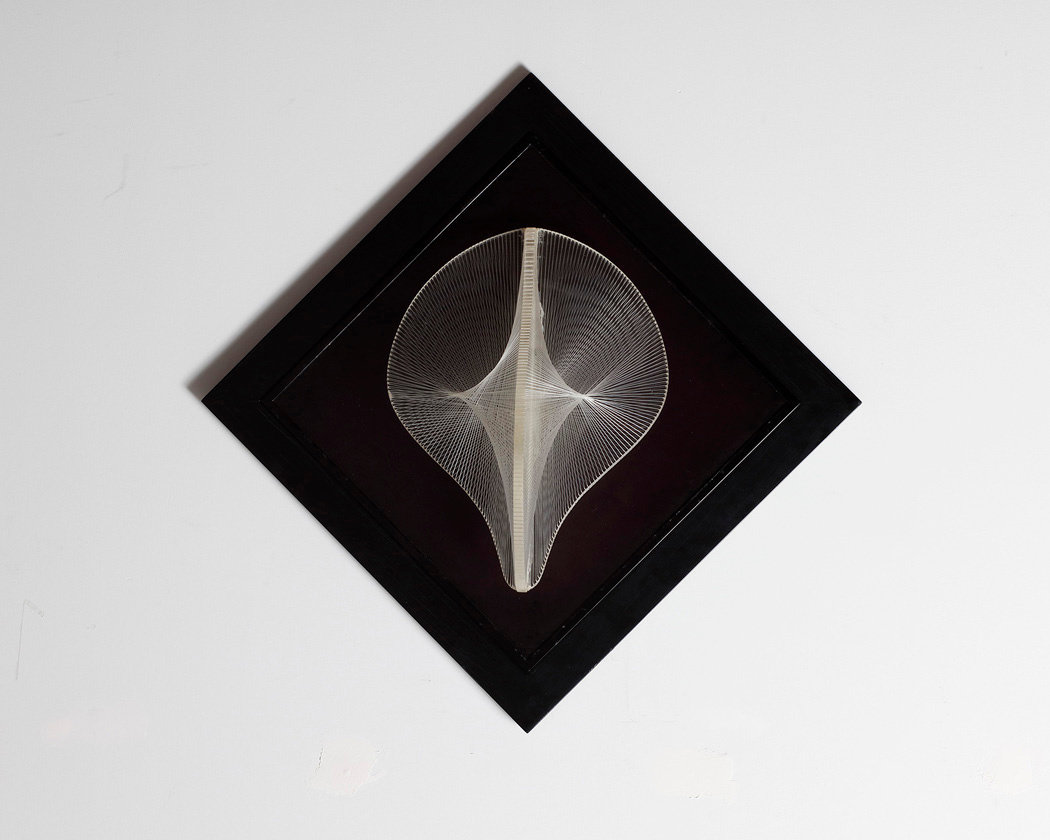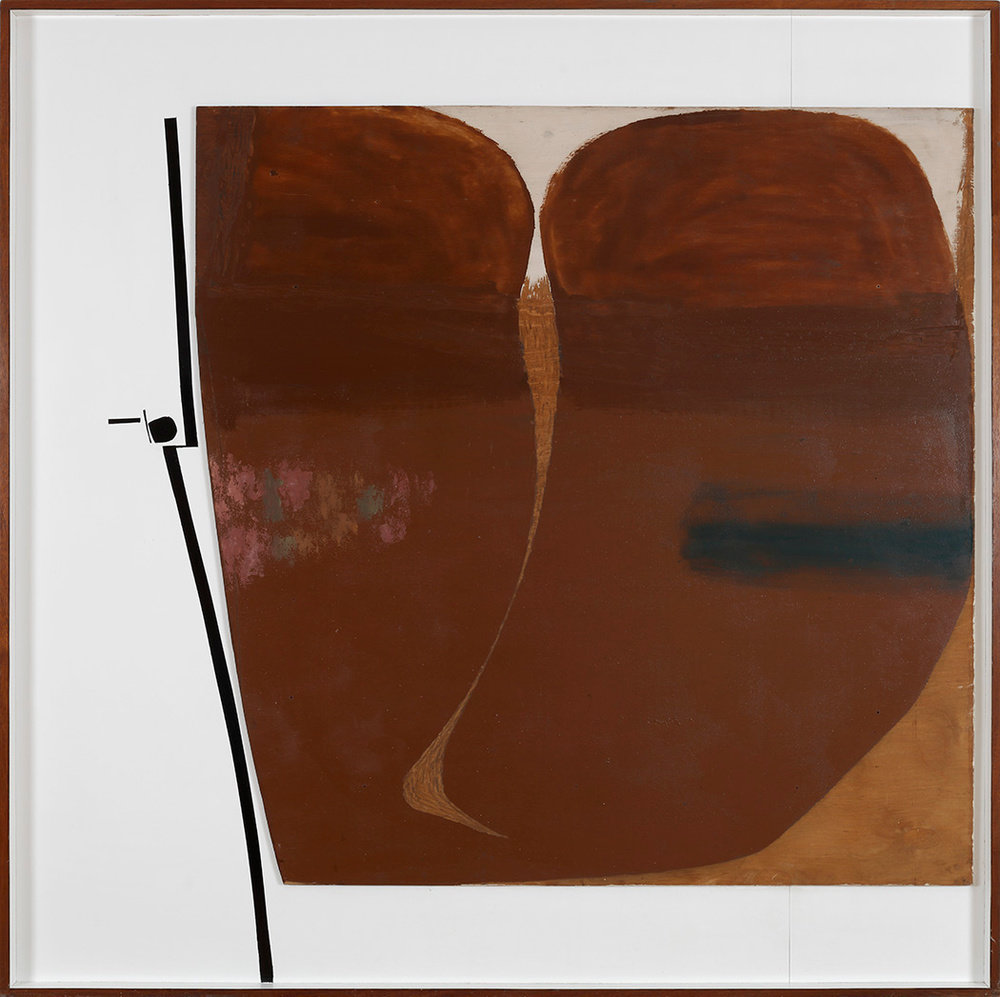Frieze Masters
Marlborough presents a brief survey on post-war sculpture, its materials, construction methods and meanings from a decade around 1960, and illustrating a few of the principal sources and developments in 20th century sculpture.
By the 1920s Naum Gabo’s use of innovative materials - cut metal sheet, glass or perspex, metal or nylon filament, sometimes painted - combined with his revolutionary notion of transparency and interior space as central elements in sculpture, was to exercise a significant influence on British artists such as Henry Moore and Barbara Hepworth, amongst others. These he met and befriended in London in Constructivist circles in the 1930s, and later while staying at St Ives throughout the war. In the late ‘30s Hepworth, alongside Moore, began to open up their sculptural forms, hollowing out solid bodies after their encounter with Gabo, as well as using string at first, and Hepworth later with wire, to mesh with the wood or metal of their sculptures. Gabo’s designs for a giant, transparent wall-mounted sculpture for Rotterdam (later realized as a 25-metre freestanding work) would prove an inspiration for more than one of Hepworth’s designs for what would become her famous wall-mounted open-form sculpture for the John Lewis building in London’s Oxford Street.
It may seem a little far-fetched to include Victor Pasmore amongst sculptors, but he too was influenced by Gabo’s ideas in his 20-year association as Consulting Director of Urban Design assisting architects of the Peterlee New Town Corporation, as well as in his use of assembled 3-D geometric forms mounted on perspex, which appear to float in space. Besides his hand-made carpentry elements in such ‘paintings’, he would incise or gouge their surface and create the suggestion of real spatial depth by contrasting expanding fields of fluid colour (which he often titled ‘developments’) which were held in check by severe black lines or blocks.
Joe Tilson actually trained as a carpenter, and his earliest works show his feeling for wood both as a material and as a subject in itself. His developing eye for robust design lighted on constructed features in the Art Deco style of the cinemas he visited. Having ‘re-constructed’ and – in a new development, painted – a characteristic emblem featured in Odeon cinemas, the sight of that work on its side gave him the idea to compose a painting on wood within a wood frame, to create a witty illusion of three dimensions in two, foreshadowing his fizzling constructed and painted wall-relief creations of the ensuing decades.
Throughout its history, for the viewer sculpture has always had the option either to create a frontal encounter in high relief against a neutral, sometimes ‘invisible’ background, or the possibility of circumambulation to explore a free-standing object in space. Gabo’s and Hepworth’s projects for sculpture on buildings still favoured free-standing works, even if they couldn’t be fully viewed in the round.
Kenneth Armitage, like his contemporary Lynn Chadwick, had earlier worked on abstracted figure groups that had gradually been welded into a wall of figures and limbs to be viewed frontally. With his ‘Pandarus’ series of unique bronzes, Armitage alludes to the Chaucerian go-between figure who facilitated communication between thwarted lovers, hence the funnel openings resembling mouths and ears which suggest a presence beyond, but which emerge from a wall which halts its revelation.
Like Armitage, William Turnbull chose to begin working in bronze which, along with stone, has always been the most traditional material for sculpture. Delving further than Armitage’s classical subject, Turnbull was drawn into prehistory and primitive life. ‘Fin’ is characteristic of a series of totem-like figures he made, with enigmatic marks and incisions whose significance may now be hidden, but whose appearance evokes the timelessness of life present in history.
Selected Pieces



